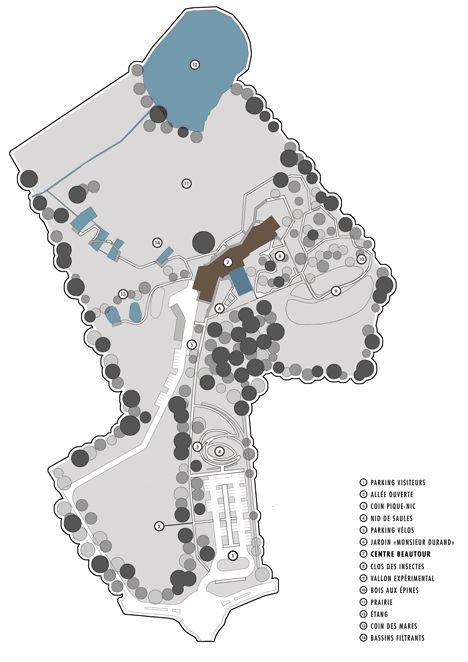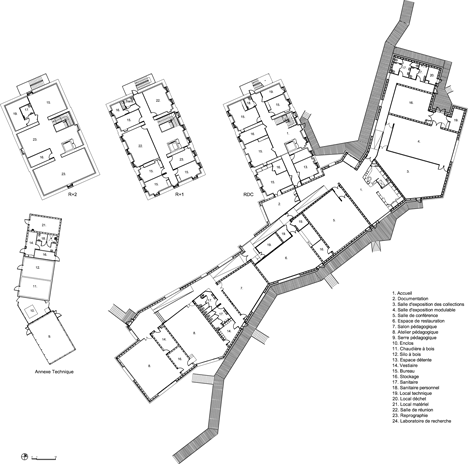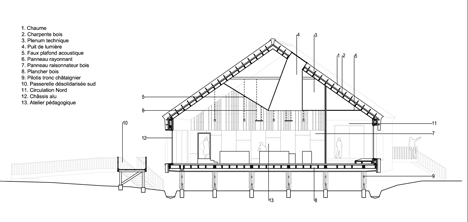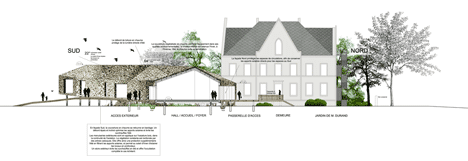Beautour thatched museum and biodiversity research centre by Guinée*Potin Architectes
Thatch covers both the walls and roof of this wildlife museum and research centre in Beautour, France (+ slideshow).
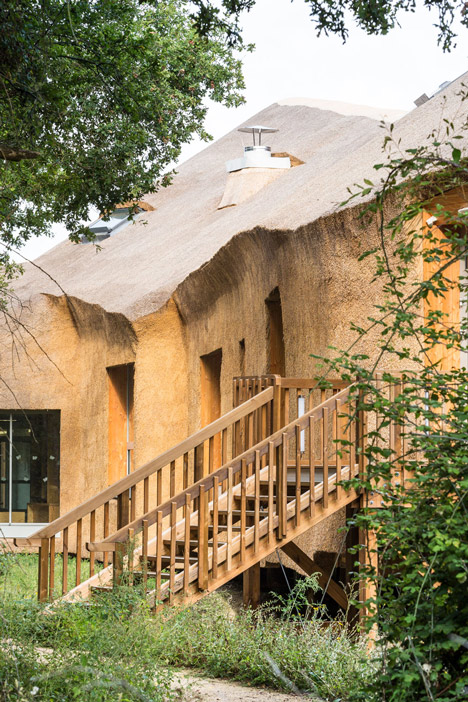
Designed by French studio Guinée*Potin Architectes, the Centre Beautour is located in the former grounds of biologist Georges Durand (1886-1964), who spent his career studying the birds, insects, plants and mammals that he found during travels across France, Africa and the Pyrenees.
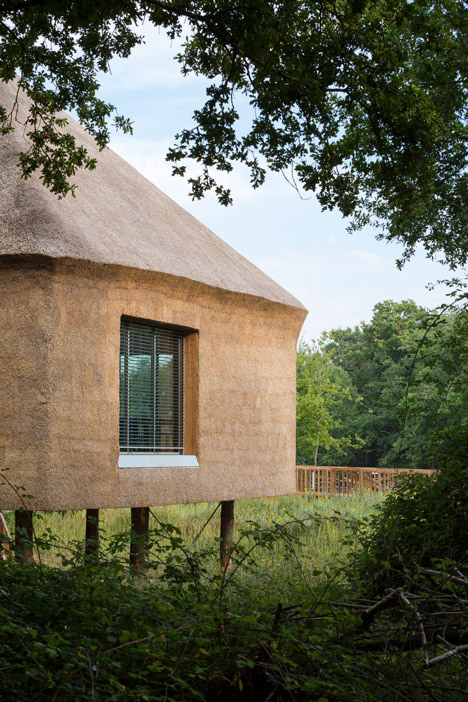
The architects have renovated the existing three-storey house and extended it by adding a single-storey structure with a thatched exterior. They also developed a landscape strategy for the grounds, intended to create a diverse local ecosystem.
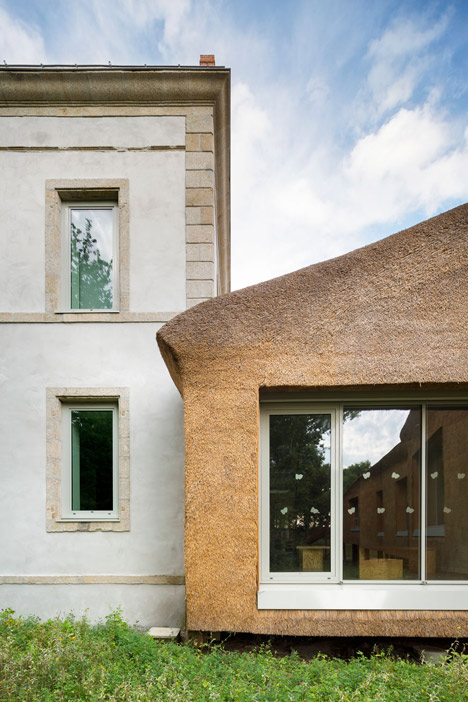
"The project is neither a theme park, nor an ornamental garden," they explained. "This really is a site-specific project, inspired by the local biodiversity, the topography and the other qualities that are proper to Beautour."
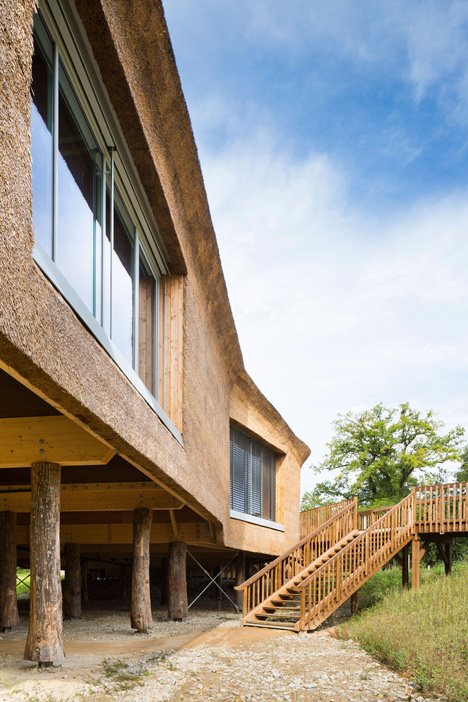
Thatching made from reeds was chosen for the exterior of the new building, as a reference to a traditional construction technique in the Vendée region.
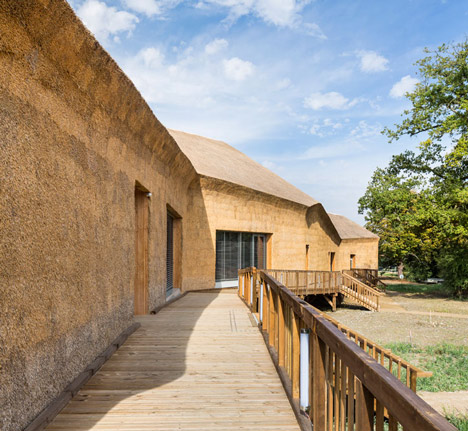
"The choice of thatched skin allows a contrast with Durand's mansion," architect Hervé Potin told Dezeen. "The building grows organically, embracing the mansion and spreading out to the site without overthrowing the natural order."
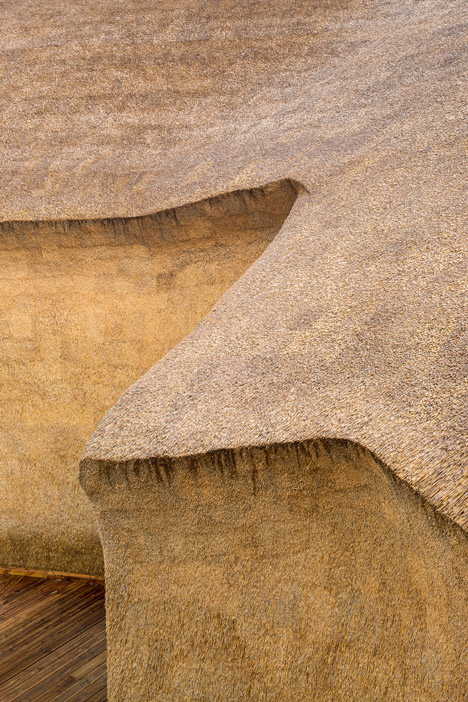
The building is raised off the ground on wooden pillars, reducing its impact on the landscape and allowing space underneath for a shallow pond.
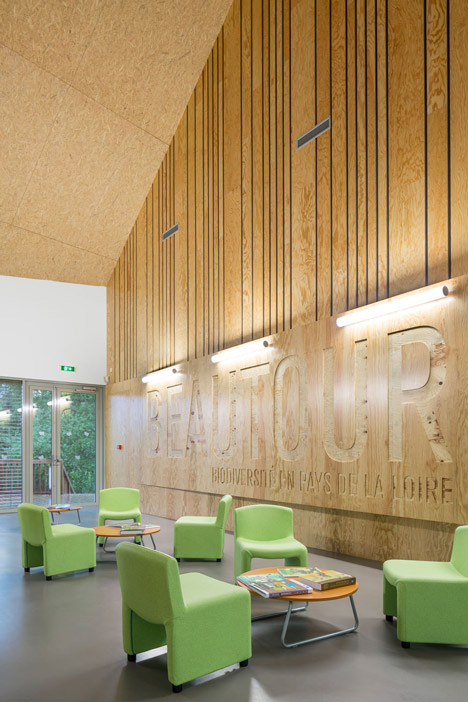
"Making the building rise up the ground allows the biodiversity to stay in place," said the architect. "The project slowly lifts up to unveil the pond hosting frogs and herons."
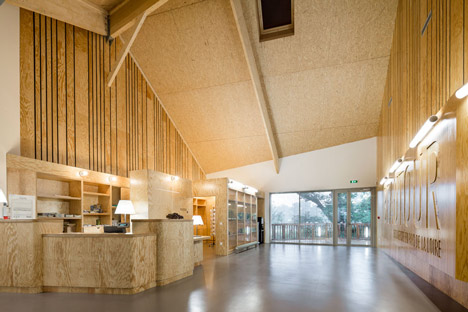
A wooden ramp leads visitors into both the new and old parts of the complex. While the old house accommodates research laboratories and events spaces, the new wing contains permanent and temporary exhibition spaces.
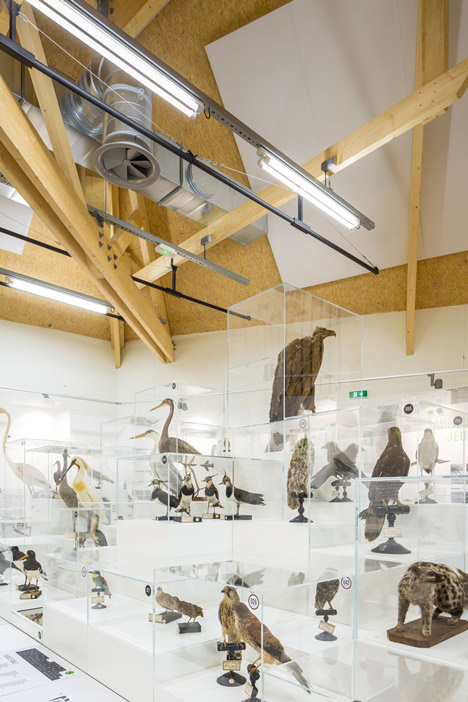
A prefabricated timber frame gives the building its structure and is left exposed inside, including within a triple-height lobby that offers seating areas for visitors.
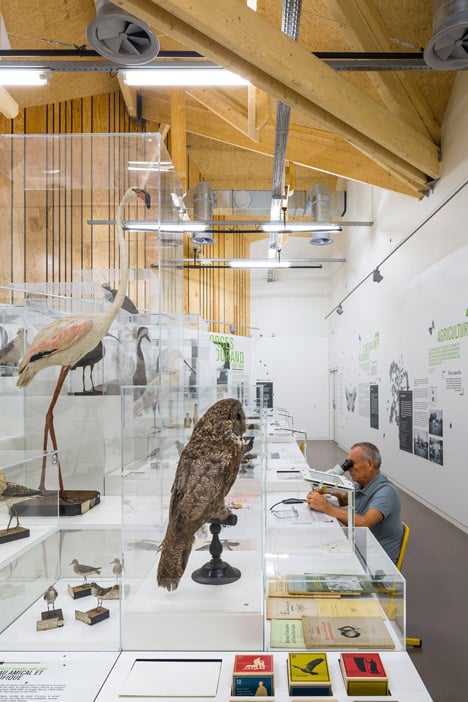
Photography is by Sergio Grazia.
Here's a project description from Guinée*Potin Architectes:
Museum & Biodiversity Centre
Main idea of Beautour centre is to glorify the historical Georges Durand's mansion (a Vendean naturalist, 1886 - 1964) who got important collections. Man of rights, he quickly developed a passion for natural sciences. For 70 years, he collected plants and insects from all over Europe, with the help of his friends and fellow scientists. This is how he has been able to collect nearly 5,000 birds, 150,000 butterflies and insects, and numerous herbariums. Thus almost all 4,500 species of the french flora are hereby represented.
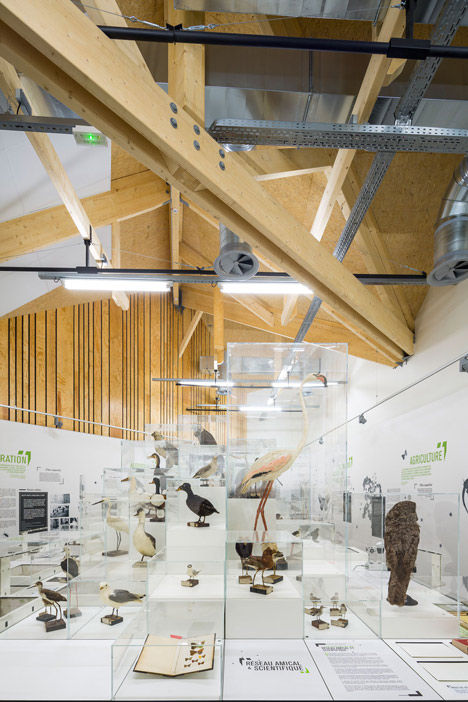
Context
The project aims to develop educational and scientific supports themed on biodiversity, as well as a management strategy and evolution prospectives for the whole area. Beyond the thematic gardens, composting, and using rainwater for watering, that are some obvious actions, the project aims to help new forms of biodiversity to regenerate this site, abandoned for 30 years.
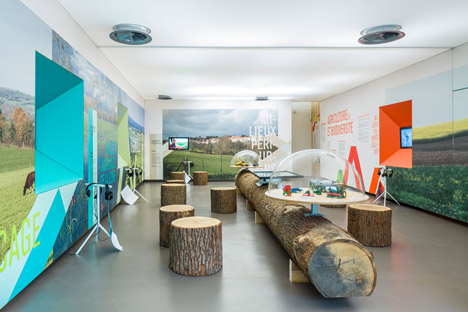
Some plots of land have reached a state of «climax», and the global intervention presents two alternatives : either an integral preservation, either a minimal intervention that could engage a new natural diversification. Some other plots, on the contrary, have been maintained in a state of biological poverty due to frequent mowing and pasture. These ones could use a higher level of interventionism, in order for a new ecosystem to settle on a long term basis.
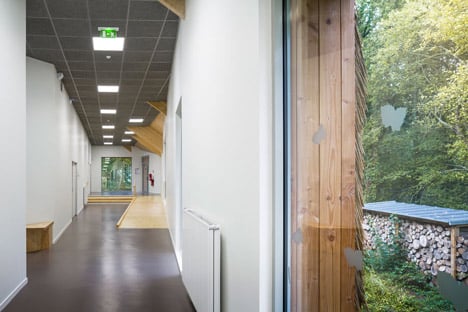
Biodiversity
The Museum & Biodiversity research centre tries to find a right balance between light actions, preserving the biodiversity already on site, and other stronger actions, creating a positive impact on the biological diversity. Thus the project is neither a theme park, nor an ornamental garden.
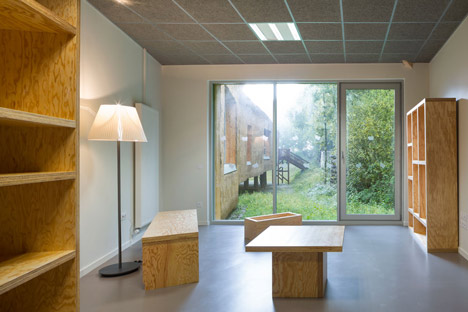
This really is a site-specific project, inspired by the local biodiversity, the topography, and the other qualities that are proper to Beautour. The visit itinerary is drawn by this logic, scientific purpose leading the visitor down to the fields and the valley, where the wild nature meets both Beautour historical and newly designed gardens and meadows.
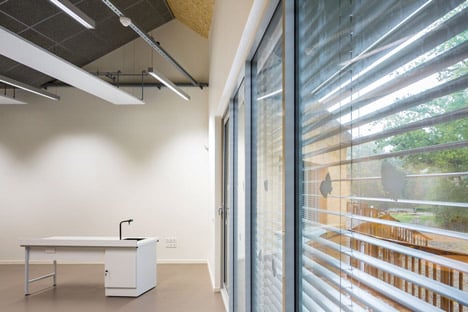
Architectural project
In a very present landscaped green setting, the project takes on a strong identity, re-interpreting a traditional technique in a contemporary and innovative way, by adopting a thatched skin, that entirely covers both walls and roof of the building. The competition renderings display the natural ageing of the material, fading to grey tones and shades changing as the seasons pass by.
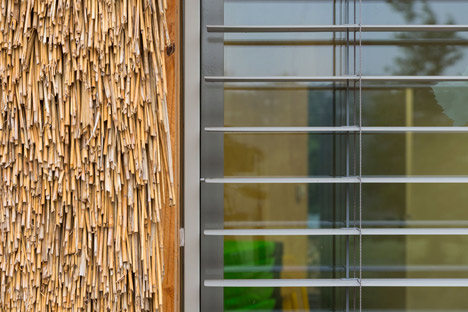
As a compact shape would have vied with Mr Durand's mansion, the building grows organic, embracing the mansion, surrounding it and spreading on the site without overthrowing the natural order. Solid raw chestnut tree trunks also confuse the overall image of the mimetic project. The building, as a branch laying on the ground, is a 'piece of built landscape', a 'new geography' completing the natural scenography.
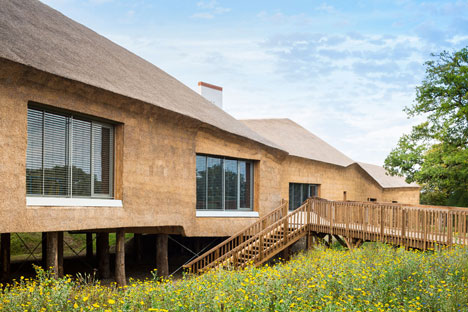
Making the building rise up the ground allows the biodiversity to stay in place and minimises the impact of foundation works. The project slowly lifts up to unveil the pond hosting frogs and herons. The technical facilities annex is painted black and houses locker-rooms and a wood-fired boiler. A pedagogical greenhouse stands next to it at the entrance of the site.
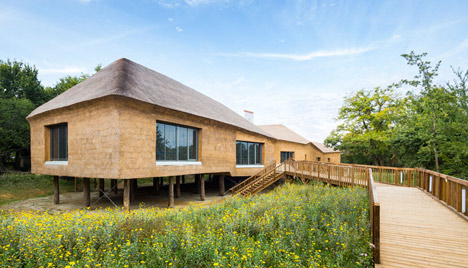
Global approach : how to combine bioclimatic design and contextual approach
A bioclimatic approach seems obvious considering the program (environment and biodiversity are the leitmotiv words), and would concentrate on being as compact as possible, in order to prevent thermic loss.
But in the context of Beautour, where the mansion (even in ruins) stands quite impressive from the first visits, it has been chosen not to go in this way and add a second massive building, but instead to design a stretched shape, laying on over 100 meters.
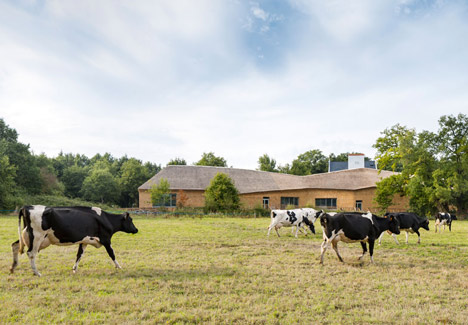
From our point of view, this contextual approach compensates the ideal of the bioclimatic shape, and follows these principles:
- Light impact on the surroundings by using natural thatch and raising the building on stilts, lowering the impact of foundation works
- Solar south façade, generously open on the landscape, and circulations concentrated on the north side
- Maximal in-factory prefabrication phase, allowing a clean construction site and a low environmental disturbance
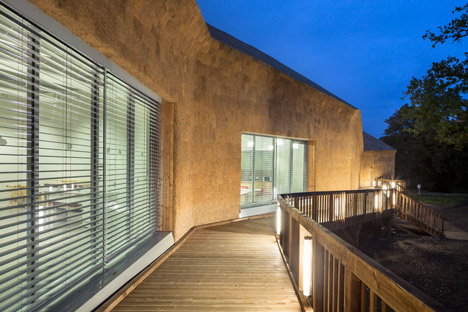
Structure & materiality
Given the will to protect the existing ground and minimise concrete foundations, the extension is built on a prefabricated timber frame, allowing a control during the fabrication with high precision assembly techniques, and a high internal flexibility in the future. The use of a composite timber-concrete floor compensates for the low inertia of the timber structure. Heath is kept inside in winter, but the thatched roofs and walls (35cm on roofs, 25cm on walls) prevents its penetration in summer.
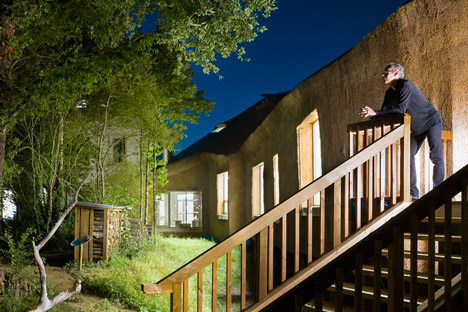
Concerning the existing mansion, it is rehabilitated in a patrimonial way: restoration of all windows, floors and timber frame, exterior walls are coated with a light grey lime plaster. Inside the mansion, existing floors have been conserved and original cement tiles have been relocated and mixed with contemporary pieces to create an ambiguousness on what is and what has been.
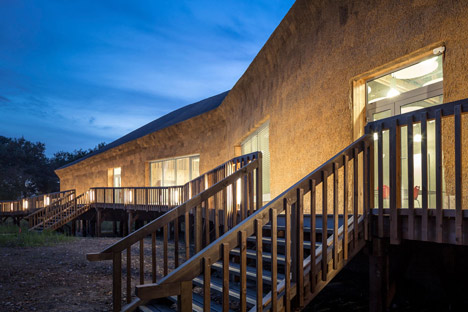
Orientation
On the south façade, the pronounced thatch overhang, in association with the existing deciduous trees hedge, prevent from overheating during summer, and provides a visual comfort all year long. In the restored building, the width of the walls and the insulation panels (90 cm combined) and the position of the windows (aligned with the insulation) create a solar protection from direct sunlight during summer months.
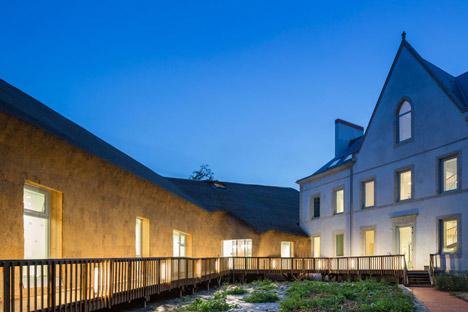
Program: Museum & Biodiversity research centre
Address: Le Bourg-sous-la-Roche, Beautour, La Roche sur Yon
Client: Région des Pays de la Loire
Architect in charge: Agence GUINEE*POTIN Architectes
Design team: Anne-Flore Guinée et Hervé Potin architectes; Solen Nico chef de projet
Landscape design: Guillaume Sevin Paysages
Scenography: BLOCK Architectes
Graphic design: WARMGREY
Museographic content: Stéphanie VINCENT
Engineering: ISATEG (structure / fluides), ITAC (acoustique)
Area: 2057m2
Cost: 5000000€HT
